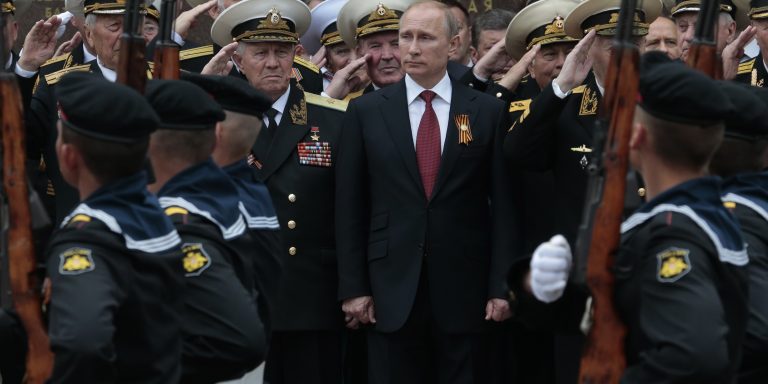INTELBRIEF
August 27, 2018
IntelBrief: Russia and the de facto blockade in the Sea of Azov

- In addition to illegally annexing Crimea, Russia has been increasing its presence and interference in the Sea of Azov.
- Repeated vessel boarding, along with lengthy crew and vessel detentions, are hurting port-related industries in Mariupol and other cities.
- Russia isn’t technically blockading Ukraine since the two countries have a 2003 agreement on shared use of the Sea of Azov and the Kerch Strait.
- From actual combat, to cyber campaigns, to economic pressure, Russia is now engaging in full-spectrum warfare in Ukraine.
.
Since the illegal annexation of Crimea in 2014, and its invasion of eastern Ukraine, Russia has applied a wide-array of tactics to meet its desired ends in the region. It has sent in a ‘track suit invasion;’ armed Russian-friendly rebels with surface-to-air-missiles and then tried to use the resulting downing of MH-17 as a propaganda weapon; launched cyberattacks against Ukraine and anyone thought to be a threat; and now is increasing its pressure in the Sea of Azov, a crucial waterway for Ukraine.
The completion in May 2018 of the Russian-built Kerch Strait Bridge was a strong sign that regardless of international sanctions and pressure, Moscow is not going to reverse its annexation of Crimea. To justify its moving of vessels from the Caspian Sea to the Sea of Azov, Moscow has cited the need to protect the new Crimean bridge from sabotage and damage. This is probably a valid concern, but the larger impact is on the free flow of Ukrainian goods in and out of port cities like Mariupol. Russian patrol craft have increased their boarding and detentions of Ukrainian and other nations’ vessels. An August 7, 2018 article in Radio Free Europe/Radio Liberty reported that since mid-May 2018, Russian patrols have detained ‘148 Ukrainian and foreign merchant ships -- many more than once -- and interrogated their crew members.’
The Russian pressure tactics in the Sea of Azov can be described best as a quasi-blockade of a vital waterway. Russia’s maneuvers stop short of a de jure act of war because technically, under a 2003 agreement signed with Kiev, Russia is permitted to conduct naval boardings as it sees fit. The result is a slow-down of an already struggling industry; delays in port operations are extremely costly—on top of a reduced fleet capacity because of the relatively low-span of the new Crimean bridge. Because of the 2003 agreement, Russia has been quite open in its pressure against Ukraine. There is little practically and legally that Ukraine can do.
Russian aggressions in Ukraine show no sign of abating, despite years of sanctions from the E.U. and the U.S. Russian President Vladimir Putin long ago decided that the gain for Russia in taking Crimea and destabilizing a once-Western looking Ukraine is worth more than the costs imposed by sanctions, even though those costs are significant. Since 2015, Russia has admitted to having ‘military intelligence operatives’ in Ukraine but continues to deny the presence of its larger-scale personnel and heavy equipment. Its consistent and outright dismissal of provable facts—such as its role in the downing of MH-17—was an early rehearsal for the ‘fake news’ defense now seen in the U.S. and elsewhere and its bot-led propaganda campaigns on Twitter and other social media platforms continue to agitate any wedge issue.
.
For tailored research and analysis, please contact: info@thesoufancenter.org
[video width="960" height="540" mp4="https://thesoufancenter.org/wp-content/uploads/2018/08/IB-0827.mp4" poster="https://thesoufancenter.org/wp-content/uploads/2018/08/AP_25311824077.jpg"][/video]